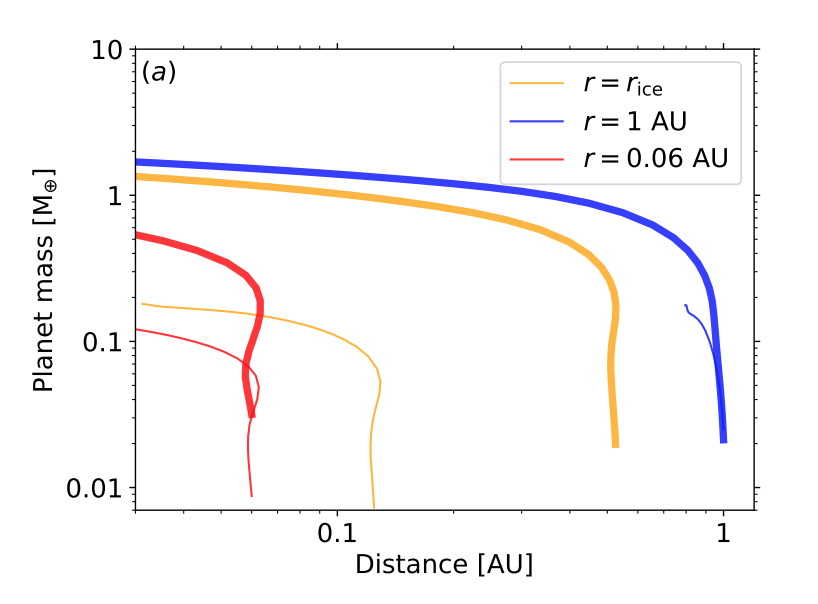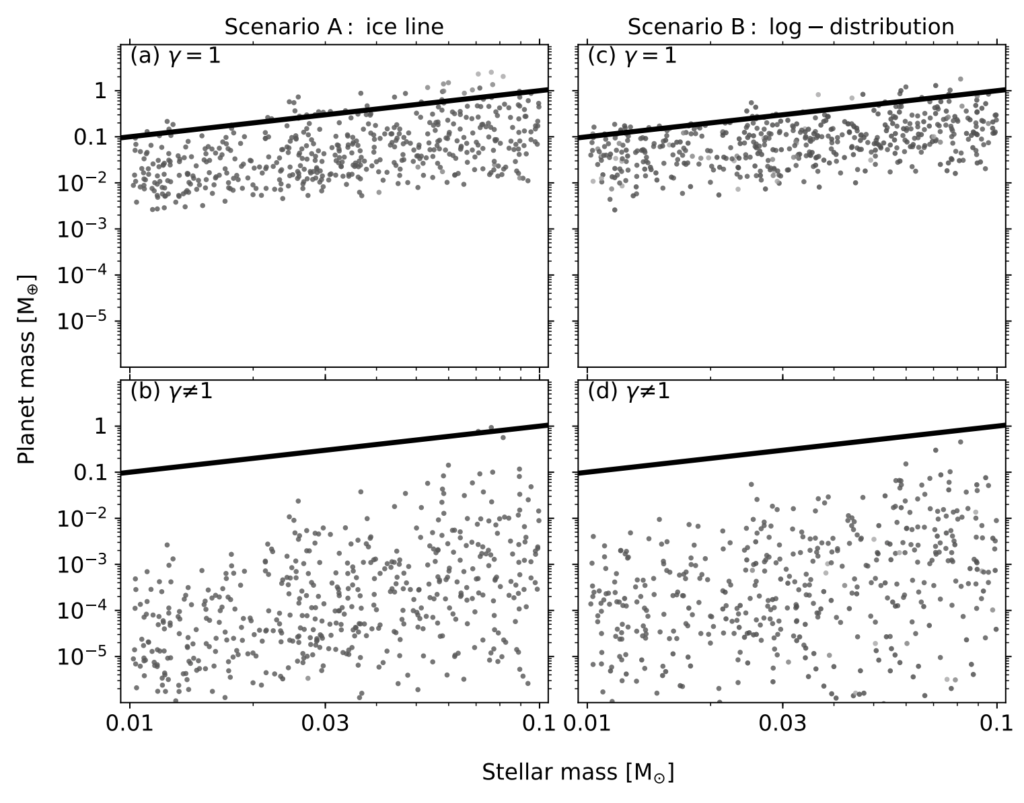Title: Pebble-driven Planet Formation around Very Low-mass Stars and Brown Dwarfs
Authors: Beibei Liu, Michiel Lambrechts, Anders Johansen, Ilaria Pascucci, Thomas Henning
First Author’s Institution: Lund Observatory, Department of Astronomy and Theoretical Physics, Lund University
Status: Accepted for Publication in A&A, preprint on arxiv
In terms of size, our sun is far from common, with the majority of stars in the Milky Way being only a fraction of the mass of the Sun. The smallest of these, called ultra-cool dwarfs (UCDs) range between about 10-100 times the mass of Jupiter (only 1-10% the mass of the sun). Despite their tiny proportions, UCDs are thought to make up somewhere between 15 and 30 percent of the total number of stars in our galaxy.
For the smallest UCDs (also called brown dwarfs), the distinction between planet and star can get rather fuzzy. These objects are too small and cold to burn hydrogen like a regular star. Instead, they are thought to be powered by deuterium or lithium fusion, or possibly even the energy released by slow gravitational contraction. Because these objects are powered differently than their larger cousins, the resulting protoplanetary disks that form around them are likely different as well. Planet formation around an UCD might therefore produce something rather exotic.
The authors of today’s paper seek to better understand what kinds of planets might form around these tiny stars. To do so, they use a planet population synthesis model to predict what the ‘average’ UCD planet should look like. At it’s heart, a planet population synthesis model predicts properties such as the size, composition, and orbits of the planets based on a range of input parameters related to the host star and the protoplanetary disk. This is a powerful way to answer questions such as: Can UCD planets form at all? Are they rocky or gaseous? How sensitive are these answers to our uncertainties about the planet formation process?

To start, the authors model the growth of a few protoplanets embedded in a disk of gas, dust and pebbles. Figure 1 shows the growth and evolution of these protoplanets around a brown dwarf (thin lines) and a late M-dwarf (thicker lines). As the protoplanets accumulate solid material (through pebble accretion), gravitational interactions with the gas disk drag the planets closer to the star. Around the M-dwarf, Earth-sized planets form. Around the brown dwarf, planets don’t grow much larger than Mars!

The authors then go on to explore a much wider range of starting conditions. In particular, three properties are varied: the mass of the host star, the initial distribution of the protoplanets (near the ice line, or spread log-uniformly across the disk) and whether the the protoplanets formed early and massive (when the disk was gravitationally unstable) or later and smaller (after the amount of gas in the disk had somewhat decreased). The resulting masses of the planets, as a function of the mass of the host star, are shown in figure 2.
The key takeaway from this figure is that any planets that might form around UCDs will be no larger than the Earth. Although the authors allow for the possibility of gas accretion onto the planets, the conditions are never met for this to occur – no exo-Jupiters here! In the case where the protoplanets form via gravitational collapse, the size of the resulting planet scales linearly with the size of the host star (if you get an Earth-sized planet from a late M-dwarf, you get a Mars-sized planet from a brown dwarf). If the protoplanets form later on, however, this scaling becomes much steeper and you get absolutely teensy-tiny planets around the brown dwarfs.

Although the conditions in the protoplanetary disks around these UCDs are much different than their more massive counterparts, planet formation in these systems still appears inevitable. The idea of a system of miniature worlds orbiting a dim, lukewarm, failed star may seem outlandishly exotic at first, but maybe isn’t all that unfamiliar. After all, we have a failed star surrounded by tiny worlds right here in our own solar system!




